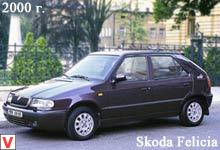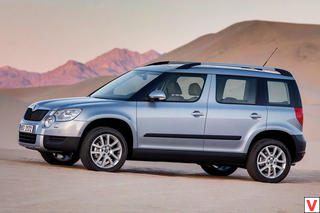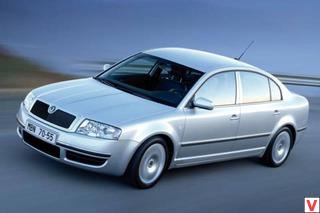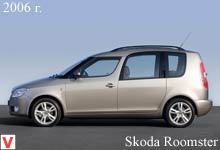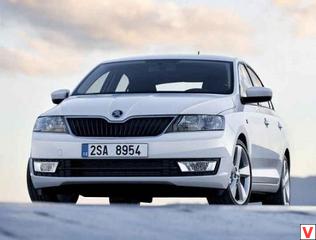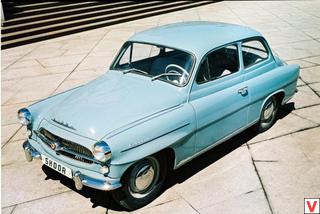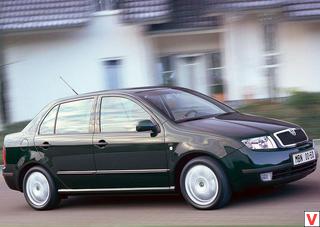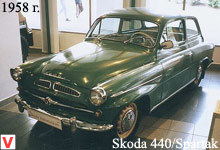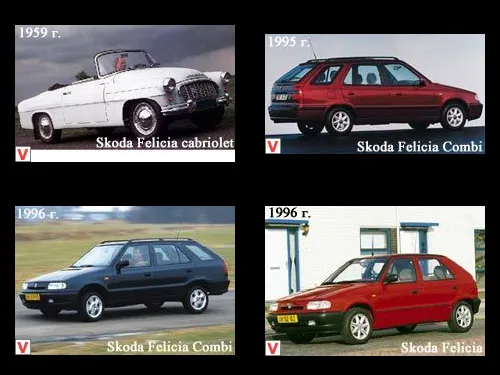
To call the first Skoda car, bearing the name Felicia, a separate model, can only be conditional, since this name was assigned not to models, but modifications. In 1959, the first generation Octavia was released. The basic modification was a 4-cylinder engine with a power of 40 hp. Modification with a more dynamic power unit capacity of 45 hp Octavia Super was called, and a convertible with a 50 hp engine. - Felicia. Otherwise, there is no “heredity” in modern Felicia with that gig.
In the early eighties, Skoda Favorit appeared. The body design was developed at the famous Italian studio Bertone, the chassis design was Czech. The car turned out good, enjoyed steady demand. But in the late 90s, economic problems forced Skoda to look for a foreign partner: on April 16, 1991, an agreement was signed with the Volkswagen concern. The Germans understood that it would not be possible to immediately release a modern European car under the Skoda brand.
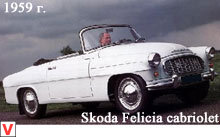
Therefore, it was decided to modernize the Favorit, which was produced from 1988 to 1995, and to establish its serial production until a car was created with the help of Volkswagen at the Skoda plant, which could seriously compete with the cars of the golf class flooding Europe. The Germans were very actively involved in the work; several hundred changes were made to the Favorit design, and the quality was noticeably improved. Only the main units (engine, transmission) remained the same, and all the other parts (body, interior, suspension parts, etc.) were new. The result of the modernization of the model Favorit presented in the fall of 1994 - it was the Skoda Felicia. Four-door hatchback.
In July 1995, a modification of the Felicia Combi appeared, which existed in two versions - a pick-up truck with a carrying capacity of 600 kg and a five-door station wagon. Compared with the Favorit, debuted Felicia has become more harmonious and "rounded." The quality of technical equipment has greatly increased due to the use of Volkswagen technologies. New taillights allowed to expand the opening of the fifth door and lower it to the bumper, reducing the loading height. The interior is quite spacious for a small car cabin has been completely redesigned. High-quality materials and well-fitted parts appeared. The instrument panel is quite informative. All controls at hand.
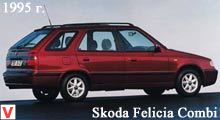
It became convenient to sit down both on front, and on back seats. Knees of passengers behind do not rest against the front seats, there is enough free space and above the head. This speaks in favor of Felicia also because the length of the Czech car is not very long - 3.8 m. The line of power units consisted of a reliable and unpretentious 1.3-liter 58- and 64-horsepower engine. In 1995, a modification of this engine with distributed injection MPI (68 hp) appeared, and since 1996 a 1.6-liter modern engine has been added, also with a distributed injection engine from the VW Golf III with a power of 75 hp, which endows Skoda Felicia almost sporty temperament.
Another Volkswagen engine is a 1.9 liter diesel. It has an average power (64 hp. Pp.), But it is very economical, fuel consumption does not exceed 6.2 l / 100 km. Gearbox - only mechanical. By the way, the Felicia Combi wagon is the same hatchback, but with a 354 mm increased rear overhang.
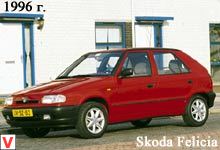
The fifth door and tail lights they are exactly the same. Of course, this was done to reduce costs, but the unification turned out to be a disadvantage - the loading height of the station wagon is not less than that of a hatchback. Two options are available: standard LX and luxury GLX. Standard equipment of the LX version includes: tachometer, electronic clock, external lighting switches.
Mirrors are adjusted manually, in the GLX version - by means of an electric drive. As an optional extra, power steering is available. The equipment level of the cabin was expanded only in 1998, when the car was modernized. Radically changed the front of the model, making it more prestigious in style Octavia: vertical grille slots, chrome edging around its perimeter.
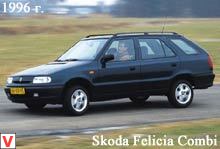
Slightly changed the interior design and equipment, bumpers began to be painted in the body color. In short, nothing was left of the angular lines created by Maestro Bertone. The interior is decorated with gray plastic and equipped with removable removable rear seats, allowing a significant increase in the luggage compartment. By order, an impressive package of additional equipment was installed, including air conditioning, electric seat adjustment, rear-view mirrors, etc.
Skoda Felicia was offered not only with the body Hatchback and wagon, there was also a pickup. All bodies are galvanized, quite strong and durable, have a 6-year warranty against rust, but still not so good in resisting it, compared to expensive foreign cars. In 2000, the release of the car stopped.
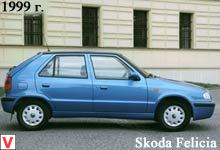
Other images auto Skoda Felicia
